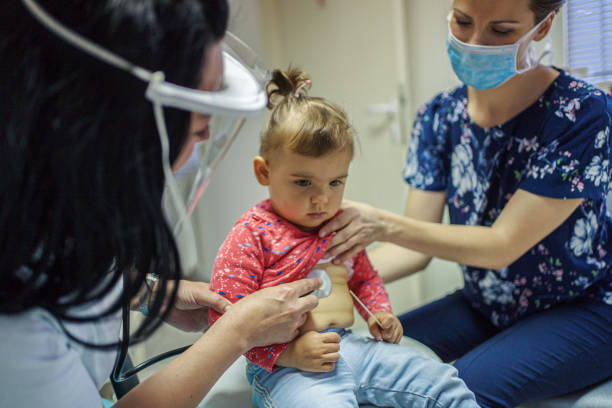UNLV pediatrics residents have had to constantly adapt while they witnessed the realities of medicine up close this past year due to the COVID-19 outbreak, changing their lives from what they were previously.
Alis Roose, DO, is a second-year pediatric resident at UNLV. She and her husband, originally from California, are both graduates of Touro University of Nevada College of Osteopathic Medicine and are completing their residencies in Las Vegas hospitals, which they started amid the COVID-19 pandemic.
Being a resident physician is already an isolating experience. Working 80 hours a week, having little control over your schedule and getting few vacation days, residency is a notoriously challenging stage during the lengthy medical training process.
“On top of that, we weren’t really allowed to be together as a class because if all of us caught COVID-19 and could not be in the hospitals, it would be a big issue,” Dr. Roose said, talking about the isolation she felt in her first year of residency.
Seeing family has been a particularly difficult aspect for residents. In the months leading up to starting residency, the program announced that residents would not be allowed to leave the state. While that policy changed quickly, the logistical challenges that COVID-19 has presented have been tough in many ways.
One particularly compelling phenomenon that stemmed from the pandemic was the unusual winter season. In the pediatric world, winter is typically a time of concern where physicians see increased incidence of respiratory illness in children. However, this past year, Las Vegas and many other cities saw almost no incidence of RSV, respiratory syncytial virus, or the flu, in children.
A couple of weeks after the mask mandate was lifted, pediatricians saw almost a full respiratory season in the middle of the summer.
“It was so interesting to see how masks really made a difference [in areas other than COVID-19],” Dr. Roose said.
Residents also felt a wave of relief upon the arrival of the vaccine.
“It was so scary walking into COVID-19 rooms, and then trying to weigh, ‘I saw this many COVID-19 patients this week, should I go see my family?’” Dr. Roose said. “I remember being so relieved after getting the vaccine.”
When the adult wards were filling up with COVID-19 patients, the pediatric wards would accept patients up to age 25 if they were comfortable treating a particular case in order to help relieve some of the overload.
In children, the main concern with the virus is actually after recovery when children tend to develop MIS-C, an autoimmune condition called multi-system inflammatory syndrome. An otherwise rare condition, MIS-C typically shows up two to four weeks after a child recovers from COVID-19. Dr. Roose and her colleagues are getting very comfortable treating MIS-C because of how often they see it now.
A couple of months ago, the pandemic finally started to reach the UNLV pediatrics residents. Children started coming into the hospitals with acute COVID-19 symptoms, respiratory distress and needing serious respiratory support. Dr. Roose recounted that the virus seemed to have hit the wards in waves.
“Some weeks, we won’t see any patients come in with COVID-19,” Dr. Roose said. “Then, the following week, we will have an influx of acute COVID-19 cases where we were constantly upgrading pediatric patients to the ICU.”
These unprecedented times demonstrate how medicine goes beyond the textbook protocols and is ever-evolving. UNLV pediatrics residents have certainly learned a lot about the realities of medicine this past year, including adapting to the current medical needs and facing some of the personal struggles that come along with being a health professional.

